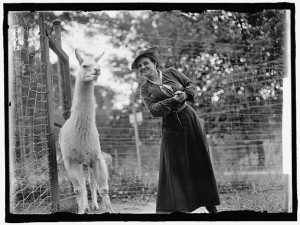Meditation on a Raisinet
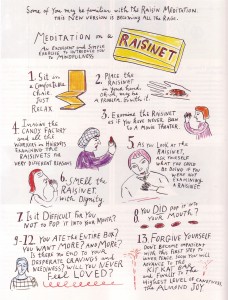 Some of you are probably familiar with the exercise on Mindful Eating that’s often taught on retreat, where little boxes of raisins are passed out at the start of the guided meditation. (They used to pass around a big bowl of loose raisins and everyone just took a handful…but that was back in the old hippy days, before things got corporate.)
Some of you are probably familiar with the exercise on Mindful Eating that’s often taught on retreat, where little boxes of raisins are passed out at the start of the guided meditation. (They used to pass around a big bowl of loose raisins and everyone just took a handful…but that was back in the old hippy days, before things got corporate.)
Anyway, for today I offer Maira Kalman’s variation on that classic meditation, published last year in Mindful magazine. (click to enlarge)
Pasta and Pine Nuts
 Another recipe today from the kitchens of the Garrison Institute — which used to be a Capuchin monastery, but is now primarily a Buddhist retreat center. (Things change.)
Another recipe today from the kitchens of the Garrison Institute — which used to be a Capuchin monastery, but is now primarily a Buddhist retreat center. (Things change.)
Spaghetti with Spinach, Pine Nuts, Garlic, Broth and Olive Oil
(serves 4)
6 cloves garlic, sliced
1/4 cup cold water
2 Tbsp. olive oil, divided
1 lb. to 2 lb. raw spinach, thoroughly cleaned
salt & black pepper
1 lb. good-quality spaghetti
3 Tbsp. pine nuts, lightly toasted
1 cup grated Parmesan cheese
1 tsp. crushed red pepper (optional)
Combine the garlic in a saucepan with water and 1 tablespoon of the olive oil. Simmer over low heat until the garlic is soft but not brown. Add a little extra water as needed so that it doesn’t completely evaporate. There should be a few tablespoons of water left in the pan.
Add the garlic, oil, and water to a shallow serving bowl with the raw spinach, the remaining olive oil, and a pinch of salt and pepper.
Cook the spaghetti in salted boiling water until it reaches desired doneness. Drain lightly, leaving some water with the pasta, and add to the serving bowl with the spinach. Toss well with tongs. The spinach will release a little more water and begin to wilt. There should be a little broth at the bottom of the bowl. Toss the pine nuts on top and serve the cheese and red pepper (if using) on the side.
***
Recipe from Fresh Cooking: A Year of Recipes from the Garrison Institute Kitchen
It’s All Amazing
 A very good friend of mine sent me this newsletter (thanks, Honig) from the Yong Kang Chinese Medicine Clinic, which is located in Kirkwood (which is amazing, when you think of it….that a Chinese medicine clinic would be in Kirkwood….I mean, how much more mainstream can you get!).
A very good friend of mine sent me this newsletter (thanks, Honig) from the Yong Kang Chinese Medicine Clinic, which is located in Kirkwood (which is amazing, when you think of it….that a Chinese medicine clinic would be in Kirkwood….I mean, how much more mainstream can you get!).
The newsletter was written by my friend’s acupuncturist, Michael Max, who is taking a three-to-four month sabbatical at Upaya Zen Center. His article, Slowly, Slowing Arrive, would definitely be worth re-posting here. But instead, I’ll post the poem he quotes by Mary Oliver, in its entirety, since the newsletter included an excerpt.
When Death Comes,
by Mary Oliver
When death comes
like the hungry bear in autumn;
when death comes and takes all the bright coins from his purse
to buy me, and snaps the purse shut;
when death comes like the measles-pox;
when death comes
like an iceberg between the shoulder blades,
I want to step through the door full of curiosity, wondering:
what is is going to be like, that cottage of darkness?
And therefore I look upon everything
as a brotherhood and a sisterhood,
and I look upon time as no more than an idea,
and I consider eternity as another possibility,
and I thing of each life as a flower, as common
as a field daisy, and as singular,
and each name a comfortable music in the mouth
tending as all music does, toward silence,
and each body a lion of courage, and something
precious to the earth.
When it’s over, I want to say: all my life
I was a bride married to amazement.
I was the bridegroom, taking the world into my arms.
When it’s over, I don’t want to wonder
if I have made of my life something particular, and real.
I don’t want to find myself sighing and frightened,
or full of argument.
I don’t want to end up simply having visited this world.
They Are and They Aren’t
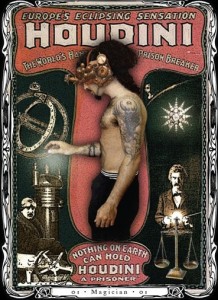 The Buddha said,
The Buddha said,
“Things are not what they seem. Nor are they otherwise.”
Intrigued?
Listen to Eugene Cash’s talk on the Paradox of Dharma. Click here.
Many Ways
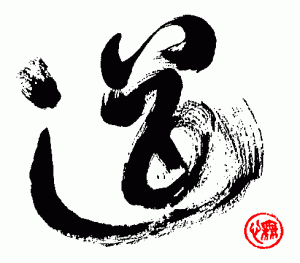 As I mentioned at the end of yesterday’s post, Ursala K. Le Guin has published a new version of the Tao Te Ching. She writes, “This is a rendition, not a translation. I do not know any Chinese. I could approach the text at all only because Paul Carus, in his 1898 translation of the Tao Te Ching, printed the Chinese text with each character followed by a transliteration and a translation.”
As I mentioned at the end of yesterday’s post, Ursala K. Le Guin has published a new version of the Tao Te Ching. She writes, “This is a rendition, not a translation. I do not know any Chinese. I could approach the text at all only because Paul Carus, in his 1898 translation of the Tao Te Ching, printed the Chinese text with each character followed by a transliteration and a translation.”
Le Guin goes on to say that she used Carus’s text as “a touchstone for comparing other English translations one with another. If I could focus on which word the translators were interpreting, I could begin to understand why they made the choice they did. I could compare various interpretations and see why they varied so tremendously; could see how much explanation, sometimes how much bias, was included in the translations; could discover for myself that several English meanings might lead me back to the same Chinese word.”
I love that she was not daunted by all those who had gone before her. She had fallen so in love with the text that she wanted to know it intimately, and she managed to do that, even though she couldn’t actually read the language it was originally written in. She lived with the text as best she could until she got to know it so deeply that she was able give it back to the world in her own voice. Wow.
Here’s a sample of her version (Chapter 1):
Taoing
The way you can go
isn’t the real way.
The name you can say
isn’t the real name.
Heaven and earth
begin in the unnamed:
name’s the mother
of the ten thousand things.
So the unwanting soul
sees what’s hidden,
and the ever-wanting soul
sees only what it wants.
Two things, one origin,
but different in name,
whose identity is mystery.
Mystery of all mysteries!
The door to the hidden.
***
Here’s the same text, from the 1972 translation by Jane English:
One
The Tao that can be told is not the eternal Tao.
The name that can be named is not the eternal name.
The nameless is the beginning of heaven and earth.
The named is the mother of ten thousand things.
Ever desireless, one can see the mystery.
Ever desiring, one can see the manifestations.
These two spring from the same source but differ in name: this appears as darkness.
Darkness within darkness.
The gate to all mystery.
***
I remember loving the ’72 translation, finding it beautiful, thinking it profound…but having no clue as to what it said. Reading Le Guin’s version, I still find it beautiful, and profound…but now I feel like I can actually begin to follow it!
Wow again.
More Exploring
 I went to the Chapel Hill Public Library today, which is FABULOUS.
I went to the Chapel Hill Public Library today, which is FABULOUS.
I went because I’ve finished all the books I downloaded onto my iPad before I left home and, feeling inspired by the Ursala K. Le Guin poem, which Greg Scharf quoted in his dharma talk (and which I have posted here), I thought I might find something more of hers to read.
I didn’t find any of her books in the poetry section. I found a lot of them listed in the science fiction section, a genre that I’m not really into, but I went ahead and looked through the shelves anyway, and I that’s where I saw… Always Coming Home …which is the last line of the poem Greg quoted!
I felt like I’d found bury treasure.
That poem grabbed hold of me from the very first line — so much so that I have started to memorize it — but when I looked on line, I couldn’t find anything about it. But then in the library, I saw the title of the book and I figured the poem must be in it (it is), even though the book is a novel…or sort of a novel, because it’s got drawings and maps and a glossary with an imaginary alphabet and all kinds of other outrageous things, including a cassette recording! (the book was published in 1985) of the music and poetry from the Kesh, the fictional people who are the subject of the book. (The library didn’t have the cassette, but it’s mentioned in the introduction, and an address in Oregon where it says you can order extra copies.)
I’m ashamed to say I’d never even heard of this book. But I have now!
And I’m totally engrossed in this literary adventure.
Here’s how it starts:
A First Note
The people in this book might be going to have lived a long, long time from now in Northern California.
The main part of the book is their voices speaking for themselves in stories and life-stories, plays, poems, and songs. If the reader will bear with some unfamiliar terms they will all be made clear at last. Coming at my work as a novelist, I thought it best to put many of the explanatory, descriptive pieces into a section called The Back of the Book, where those who want narrative can ignore them and those who enjoy explanations can find them. The glossary may also be useful or amusing.
The difficulty of translation from a language that doesn’t yet exist is considerable, but there’s no need to exaggerate it. The past, after all, can be quite as obscure as the future.
The ancient Chinese book called “Tao teh ching” has been translated into English dozens of times, and indeed the Chinese have to keep retranslating it into Chinese at every cycle of Cathay, but no translation can give the book that Lao Tze (who may not have existed) wrote. All we have is the “Tao teh ching” that is here, now.
And so with translations from a literature of the (or a) future. The fact that it hasn’t yet been written, the mere absence of a text to translate, doesn’t make all that much difference. What was and what may be lie, like children whose faces we cannot see, in the arms of silence.
All we ever have is here, now.
***
I find this “First Note” especially fascinating, since Le Guin herself has recently (2012) published her own translation of the Tao Te Ching. That’s next on my list!
Look What I Found
I took a chance today.
I’ve been thinking about trying to find a qigong class for some time, but kept putting it off while I was still in St. Louis. I’m not sure why, although I think it might’ve had to do with the fact that I’ve been disappointed in the t’ai chi classes I’ve tried. (They were all so serious!)
So I thought, hey, here I am in a new place. With plenty of time. Nowhere to go. Not much to do. I could give it a try! So I did.
And I found a great class where they do something called Five Animal Play (Wuqinxi), which is a very pleasant set of exercises “utilizing deep, smooth breathing matched to movements that mimic the crane, bear, money, deer and tiger. The aim is to enhance the flow of qi (life energy); harmonize the five phases of change (fire, water, earth, wood and metal); strengthen the internal organs, nerves, muscles and bones; prevent and cure diseases; improve the health and vitality of the body, mind and sprit; and prolong life.”
Can’t argue with that.
And besides, it’s fun!
Summer Retreat in January
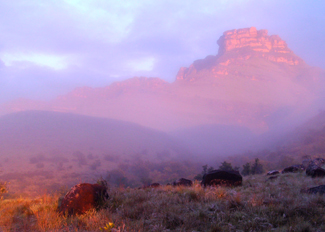 Don’t freak out, but I’m thinking about going on a month-long retreat next January led by Kittisaro and Thanissara at their Dharmagiri Hermitage in South Africa!
Don’t freak out, but I’m thinking about going on a month-long retreat next January led by Kittisaro and Thanissara at their Dharmagiri Hermitage in South Africa!
January is summer in South Africa, which is part of the draw, but it’s the location in the Drakensberg mountains that’s really got me hooked. Just look at this photo!
Plus it would be awesome to sit for a month with these two amazing teachers, whose talks I’ve been listening to for years.
* I love the way they include chanting and Kuan Yin devotional practices with traditional Theravada teachings.
* I love their personal history. Kittisaro is an American, who went to England as a Rhodes Scholar, and ended up going to Thailand to study with Ajahn Chah and then becoming a monk. Thanissara is English. She also studied with Ajahn Chah and became a nun, and then met Kittisaro….and, well, now they’re married.
* And I love the Dhamagiri mission: To support, promote, and celebrate the study, practice and teaching of the core principles of Buddhism in South Africa, and to support interfaith, educational programs and eco-awareness. Dharmagiri also initiates and supports non-denominational Outreach Programs particularly in health and education within the underprivileged communities in its local area.
***
The Dharmagiri Summer Retreat goes from January 6 to February 2, 2015. It would be expensive to fly there (about $1,800) but the cost for room and board would be quite low ($20-$40 per day), plus donation to the teachers. It would be a small group (about 20 people). There would be yoga. And walking and sitting etc. All in silence.
And, of course, there would be that beautiful, sacred land.
A Very Full Moon Day
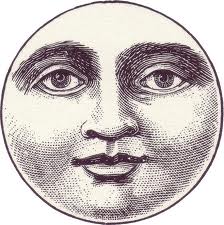 The moon was full last night (or this morning, depending on your time zone), so I celebrated by spending the day watching the video recording of a one-day course taught by Sally Armstrong. The course was designed for experienced students, and it was titled Why Do We Suffer? An Exploration of the Buddhist Teaching on the 5 Khandas (usually translated as “Aggregates” or “Bundles”.)
The moon was full last night (or this morning, depending on your time zone), so I celebrated by spending the day watching the video recording of a one-day course taught by Sally Armstrong. The course was designed for experienced students, and it was titled Why Do We Suffer? An Exploration of the Buddhist Teaching on the 5 Khandas (usually translated as “Aggregates” or “Bundles”.)
OK, so that doesn’t sound like much of a celebration. But for me it was, because I’ve been missing the monthly conference calls we had with Sally that were part of the DPP program, and this was a way for me to get a little taste of that again.
There is a lot of material on this teaching and if you’re interested in really digging into it, I recommend The Five Aggregates: A Study Guide by Thanissaro Bhikkhu. Even the “basics” are not that simple, but here’s what I got from the course:
All human experience can be broken down into five groups (khandas) of activities. These are:
Form (rupa), which is the material aspect of the body. (Form doesn’t seem like an “activity,” but since every cell in our body is always changing/growing/wearing out/dying…we’re really not a static thing!)
Feeling Tone (vedana), which is the mental experience of simply knowing that something is pleasant, unpleasant, or neutral.
Perception (sanna), which is the mental experience of recognizing what we see/hear/touch/taste/smell and sense as a mental impression.
Volitional Formations (sankharas), which is really hard to define, but which I understand to be the various mental energies that activate patterns of thought and behavior.
Consciousness (vinnana), which, in this context, is simply the awareness that something is happening. (As in: you can’t hear a sound unless you are conscious.)
And what is the point of breaking human experience into these five groups? To be able to understand these experiences more accurately by looking at them separately, seeing how they impact and relate to each other, realizing that they are all governed by the natural law of cause and effect, and that none of them–individually or collectively–are the essence of who we really are!
Kitchen Retreat
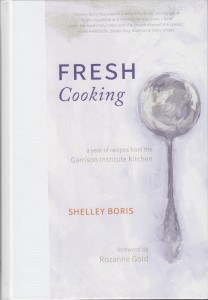 As you probably know, I love the food they serve at Spirit Rock. I like the food at IMS (Insight Meditation Society) too, but it’s not quite as spicy as it should be (in my opinion). But really, the very best food I’ve ever had on retreat was at the Garrison Institute (a gorgeous old former-Capuchin monastery, now a retreat center, on the banks of the Hudson River about an hour north of New York City.)
As you probably know, I love the food they serve at Spirit Rock. I like the food at IMS (Insight Meditation Society) too, but it’s not quite as spicy as it should be (in my opinion). But really, the very best food I’ve ever had on retreat was at the Garrison Institute (a gorgeous old former-Capuchin monastery, now a retreat center, on the banks of the Hudson River about an hour north of New York City.)
So I was delighted to discovered that their chef of 10 years, Shelley Boris, has just come out with a cookbook! It’s called Fresh Cooking: A Year of Recipes from the Garrison Institute Kitchen and it’s organized by month, with 3 (mostly vegetarian) menus each month, including desert.
Sample Menu for June
Fusilli with Peas, Squash Blossoms, Fresh Cheese, and Fennel
Carrot Slaw with Dill
Dandelion, Baby Leeks, and White Beans
Oregano Vinaigrette
Strawberries
Carrot Slaw with Dill (serves 6-8)
6 large carrots, peeled and grated
3 Tbsp. rice vinegar
2 Tbsp. minced, fresh dill
1 Tbsp. grape seed or olive oil (optional)
Salt & black pepper
In a large bowl, combine the carrots, vinegar, dill, oil (if using), and a pinch of salt and pepper. Mix and serve.

